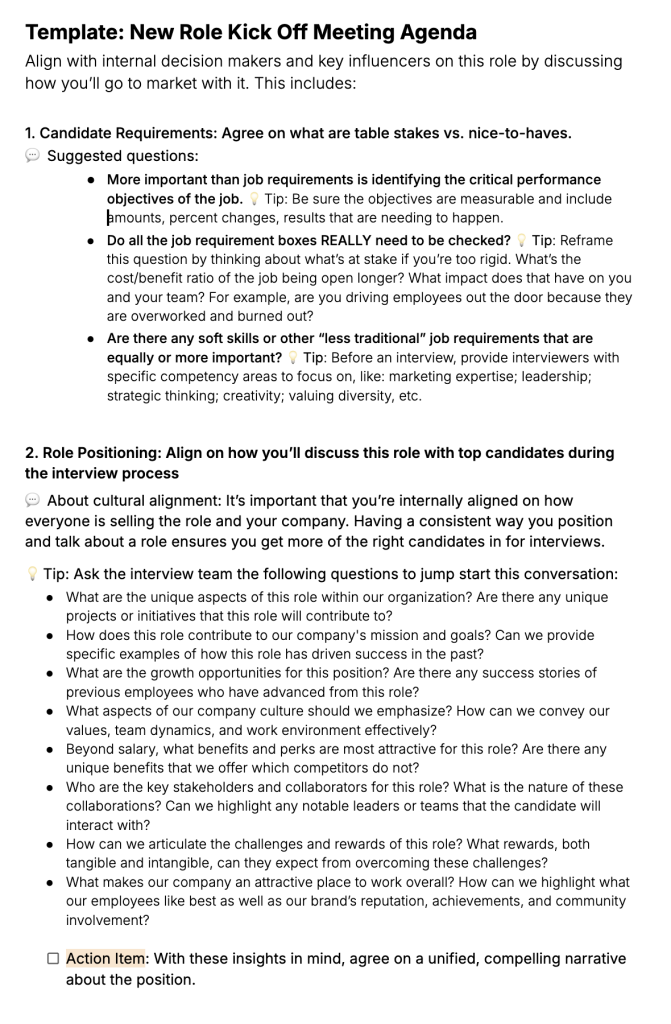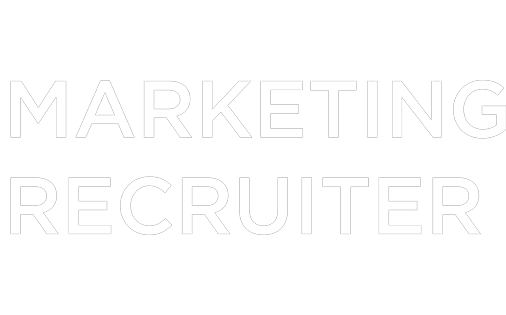Effective Recruiting 101
Great employees don’t fall in your lap. They’re the product of a well-planned recruitment strategy that starts well before the job post.
This step-by-step guide walks you through how to develop a robust go-to-market strategy – giving you tips and templates that take the heavy lifting out of finding the perfect candidate, every search.
Step 1: Get internal approval by selling the need.
Step 2: Paint a clear picture of what you’re looking for.
Step 3: Get everyone on the same page internally.
Step 4: Define your recruitment strategy for finding + attracting the best talent possible.
STEP 1
Get internal approval by selling the need.
💬 Where to Start: Be ready to make your case.
When you seek leadership approval for a new position, be ready to make your case and articulate things like:
- What the role is and how it supports your team/company goals (ex. projected revenue to be earned or saved)
- Why the role can’t be handled by current team members or someone internally via promotion, lateral transfer/shift, etc.
- What’s at stake if you don’t create or fill this role
💥 Action Item: Start to think through recruitment needs.
Start thinking about the costs and benefits of hiring internally vs. using an external recruitment partner. The costs and benefits of doing it yourself vs. hiring an external recruiter will depend on things like specificity of expertise, market/candidate demand, historical challenges filling the role, and internal recruitment team structure and resources. In step 4, there is more detail to help you make that decision.
💡 MMR Ambassador Insight: New Hire Approvals
What lessons or insights would you share with a hiring manager seeking internal approval for a new hire?
“To effectively justify the need for a new position, the hiring manager must think like a CEO or CFO. Start by looking at the landscape of your business. What matters the most to your CEO and CFO? This will help you draft your justification.
Don’t forget to dive into the financial side of things. How can this hire save the business money now? In the future? Also, how can you get the most out of the budget for this hire? For example, can you make 2 junior hires for the price of 1 senior hire?”

Jenni McDonough
Chief People Officer at Alloy
STEP 2
Paint a clear picture of what you’re looking for.
💬 Where to Start: Outline the need.
Before you start writing the job description, think through:
- What will a typical day look like?
- What 3 things do you want your new hire to accomplish in their first year?
- What specific metrics and measurements will inform you that you made the right hire in 6 months? 12 months?
💡 MMR Ambassador Insight: Competitive Salaries 101
How do you establish a competitive salary for a new position?
“Generally, you need to start with what the business can afford. If it’s under what the market bears, you may consider hiring a more junior person. To identify a competitive salary range, leverage guides published by industry trade groups. You can explore salary figures on sites like Glassdoor and Indeed to get a general sense, but keep in mind that self-reported data can be less reliable and should be used with caution. Also, don’t forget to consider the role’s geographic location. For example, a position in a small town with a lower cost of living should pay less than one in New York City. ” – Jenni McDonough (Chief People Officer at Alloy)
💥 Action Item: Create an outcome-based job description using the template below.
✅ Template: Outcome-Based Job Description

STEP 3
Get everyone on the same page internally.
💬 Where to Start: Identify anyone who will be involved in the hiring process.
Identify anyone who will be involved in the hiring process. This includes decision makers, influencers and other stakeholders who may or may not speak with candidates. Define what their involvement looks like during the recruitment, interview and hiring process.
💥 Action Item: Schedule a kickoff meeting with this group + prepare for it using the template in the next section.
Suggested format: 30-45 minutes named Kick Off for (Insert Title)”
💡Tip: Maximize everyone’s time by sending the following before hand:
- Job Description: Ask that everyone review it ahead of the meeting.
- Other Role Details: Hiring manager’s name + team/department.
- Agenda: Share a condensed version of what you want to discuss ahead of time.
- Process + Roles: Share an overview of who will be involved in the recruitment, interview and hiring process and what their roles and responsibilities will look like.
✅ Template: “New Role Kick Off Meeting” Agenda


STEP 4
Define your recruitment strategy for finding + attracting the best talent possible.
💬 Where to Start: Understand the costs and benefits of recruiting yourself vs. hiring a pro.
HR Team
- Pros: Manages a broad range of tasks and is a more cost effective solution.
- Cons: Lacks the necessary recruitment expertise and networks, so candidate quality and options tend to be lower.
Internal Recruiter
- Pros: Dedicated solely to recruitment of your organization. Typically more specialized in hiring than an HR generalist.
- Cons: Concurrently helps multiple managers fill roles and has limited expertise and bandwidth for sourcing, vetting, and finding the best candidates.
External Recruiter
- Pros: Focused on your open position, and yields higher quality candidates and faster placements due to their larger, more diverse network of specialized candidates and ability to contact inactive job seekers at your competitors (who you wouldn’t otherwise know about.)
- Cons: Many recruiters are focused on quick commissions instead of long term partnerships, so it’s essential to find a partner like My Marketing Recruiter who is as invested in your and your company’s long term success as you are.
💥 Action Item: Decide if you’ll leverage your HR team, a dedicated internal recruiter or an external recruiter.
💡 MMR Ambassador Insight: Recruiting Don'ts
What should organizations keep in mind when using an external recruiter during the hiring process?
“Don’t farm out a job to 10 different recruiters. This dilutes your brand and is a bad look within the marketplace. One time, I was contacted by 3 different recruiters in the same week for the same job. It made me wonder if the company knew what they were doing. It was also a waste of my time and the recruiters’ time because I wasn’t interested.”
– Jenni McDonough (Chief People Officer at Alloy)


